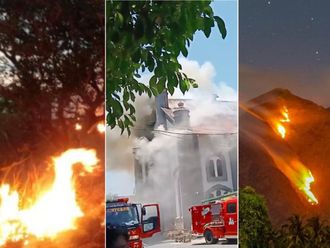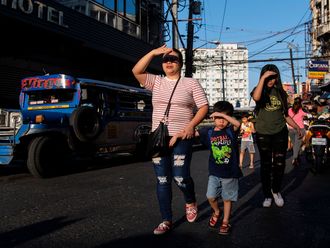Manila: Police in the Philippines have allowed pro and anti-Marcos groups to attend the reburial of the remains of former President Ferdinand Marcos — from a controlled distance — at the National Heroes Cemetery in suburban Taguig.
The development came even as Governor Imee Marcos of Ilocos Norte, northern Luzon and former Senator Ferdinand “Bongbong” Marcos requested that the event remain “simple and solemn”.
“We would like to respect the family’s request to ensure a solemn occasion,” said National Capital Region Police Office Chief Director Oscar Albayalde, after he held a meeting with the Marcoses in preparation for the event.
The date of the historic and contentious burial was not revealed.
“Pro- and anti-Marcos groups will be in designated areas to ensure that the burial is not disrupted,” said Albayalde adding, “All groups were allowed to carry placards, and use megaphones on condition that they will not harm policemen and other people.”
A thousand policemen, who will be deployed for crowd control at the event, are “now being briefed to respect human rights, exercise maximum tolerance to protesters, and conceal firearms,” said Albayalde.
Leftist groups that have rejected Jose Maria Sison, founder of the 48-year old Communist Party of the Philippines and its military wing, the New People’s Army (NPA) — also called the Rejects — have vowed to hold a protest rally during the Marcos burial.
They burnt the effigy of Marcos during a mock funeral march in Cebu, central Philippines on Tuesday.
It is not yet known if members of leftist groups that are now allied with President Rodrigo Duterte — they are called the Reaffirm — will keep quiet and not hold protest tallies before and during the event. Allies of former President Benigno Aquino have seen the Marcos’ burial at the National Heroes Cemetery as a way of erasing his heinous presidency.
Before he was elected last May, Duterte pushed for the burial of Marcos at the National Heroes Cemetery not as a hero but as president of his country.
In July, Duterte appointed three mainstream leftist leaders as cabinet members. He also began holding peace talks with the National Democratic Front (NDF), CPP-NPA’s negotiating arm since talks with government were held in 1992.
On November 8, the Supreme Court ruled 9-5 that it was constitutional and within the bounds of the administration code to bury Marcos at the National Heroes Cemetery.
It cited, as reasons, the fact that he was a former Philippine president, the Philippine Veterans Board did not disqualify him as a Second World War soldier and a lower court had never convicted him of graft and corruption and human rights violations. Moreover, he was “not pure evil” despite his mistakes and alleged rights abuses victims failed to prove that Marcos threatened their rights, it said. A lower court, not the Supreme Court, should be the venue of rights complaints;and Duterte can rescind the agreement of the Marcos family and former President Fidel Ramos in 1992, that the remains of Marcos — brought back to the Philippines from Hawaii, in 1993 — should be buried in a family-owned museum in Batac, Ilocos Norte, his hometown, it concluded.
After the ruling, the Marcoses asked for forgiveness for the “unintentional” mistakes of the former strongman — he established a Martial law rule in 1972 which has resulted in extrajudicial killing of thousands of anti-Marcos activists.
Marcos died in 1989, three years after living in exile in Hawaii, following his ouster by a people-backed military mutiny which propped up Corazon Aquino to the presidency in 1986.











